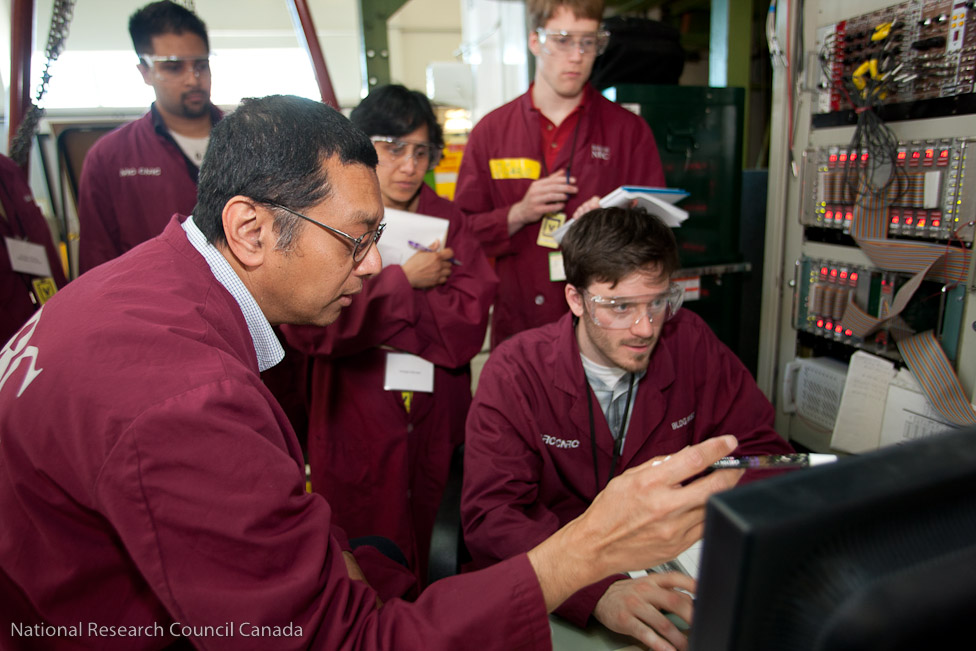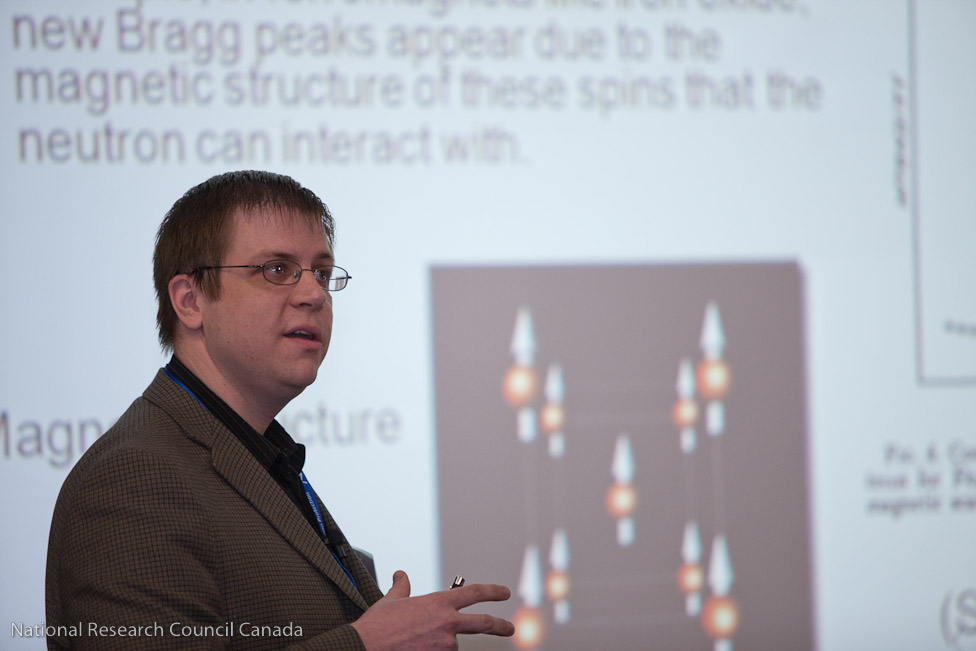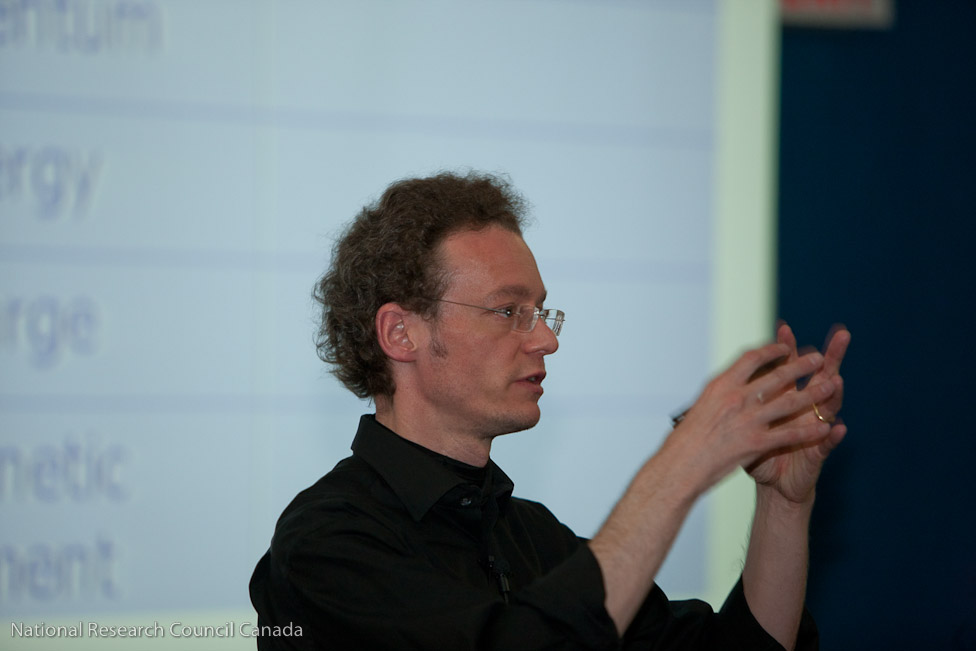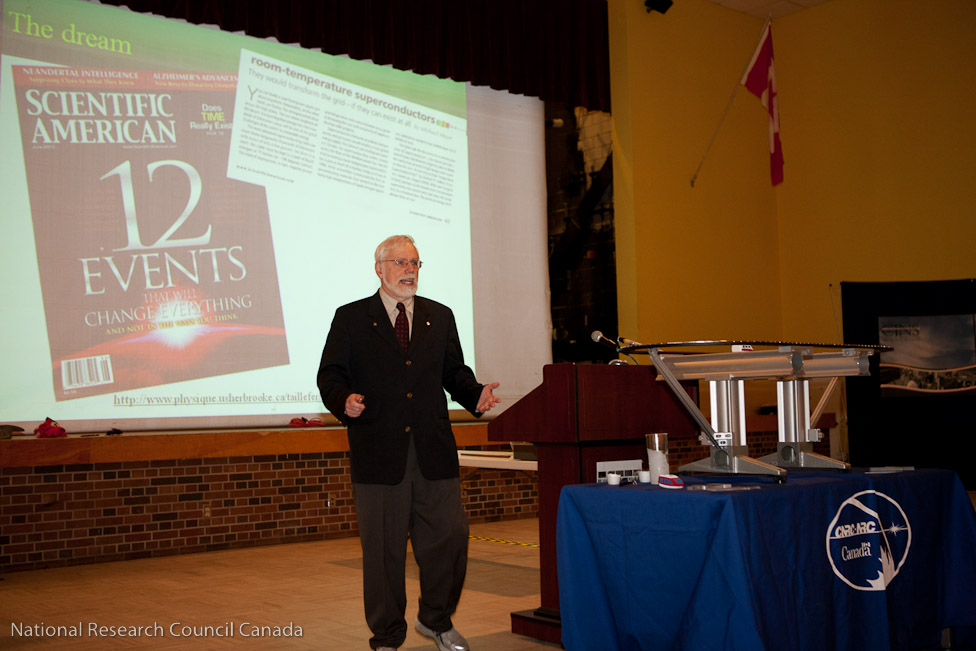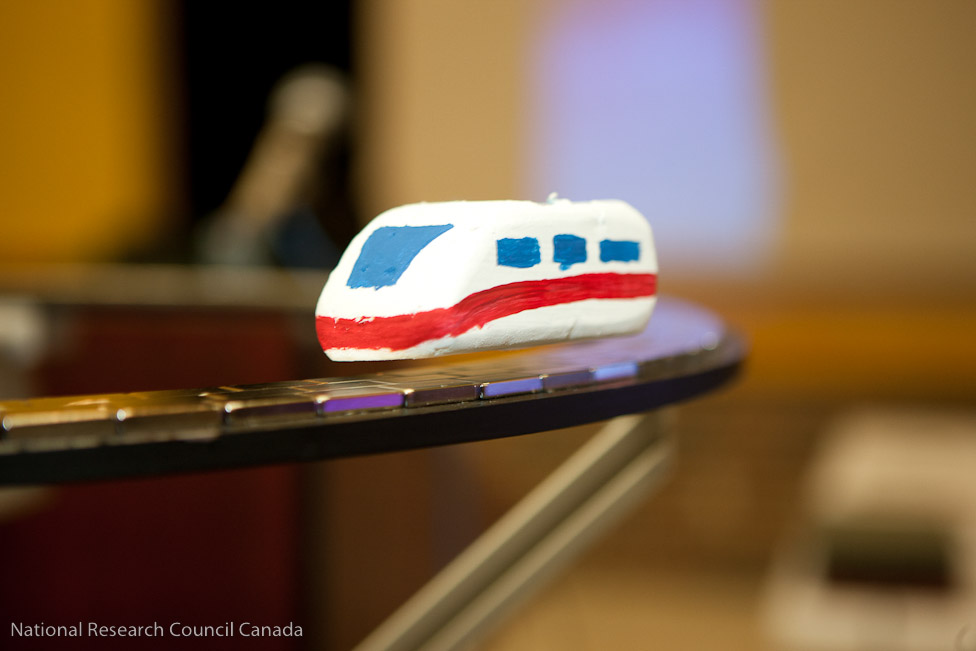What brings dozens of graduate students and research scientists together from across Canada and the world for a week in the woods of the Ottawa Valley? An education on how to use the tools for world-class materials research at the NRC Canadian Neutron Beam Centre (NRC-CNBC) at Chalk River Laboratories, a site owned and operated by Atomic Energy of Canada Ltd. (AECL).

NRC helps clients effectively exploit large-scale scientific infrastructure, such as the neutron beamlines at the CNBC. Because these research tools are beyond the scope of a single university or even a local cluster of universities, they are operated as national resources — accessible to researchers from universities, government labs and industry.
One part of enabling the user community is to provide practical hands-on training on neutron scattering techniques — experience that cannot be provided elsewhere in Canada. To achieve this goal, the CNBC has been holding biennial summer schools on neutron scattering for many years.
CINS promotes scientific research using neutron beams and the education necessary for Canadian scientists and engineers to use the neutron beams for world-class materials research. Thus, CINS partnered with the CNBC and AECL Nuclear Laboratories to hold the 11th Canadian Neutron Scattering Summer School from May 9-13, 2011.
|
|
|
|
| Ron Rogge (CNBC) demonstrates to a group of students measurement of residual stress at the E3 neutron beamline. Photo courtesy of NRC. | Zin Tun (CNBC) explains the measurement of nano-structures at surfaces, using the user interface terminal of the D3 neutron beamline. Photo courtesy of NRC. |
Although neutron scattering courses are being held at several foreign neutron sources this summer, the school attracted thirty seven enthusiastic participants from across Canada, the US and Europe. Most of the participants were graduate students and post-doctoral fellows from the disciplines of physics, chemistry and materials science from Canadian universities. The participants also included nine materials scientists from AECL who attended the school. The lecturers were drawn from CNBC staff and the community of users of neutron beams in Canada and the US.
This year’s school followed the Chalk River summer school tradition of providing an overview of the theory and applications of neutron scattering in various scientific fields and covering a wide range of topics on theory, technique and instrumentations, rather than focusing on a narrow theme. The school provided the students, who may want to employ neutron scattering to advance their research, a chance to learn the fundamentals of neutron scattering and gave them a brief overview of the field.
The school structure was also similar to previous summer schools at Chalk River consisting of morning lectures followed by afternoon hands-on experiments on the spectrometers at the NRU reactor. This format ensured a good balance between lecture presentations and practical hands-on demonstrations. The lectures covered various topics including the fundamentals of elastic and inelastic scattering, small angle neutron scattering, reflectometry, magnetic and polarized neutron scattering, strain (or stress) measurements, and several other techniques and applications. In the afternoons, students chose from a set of hands-on demonstration experiments at the neutron beamlines around the NRU reactor, guided by expert CNBC researchers. These demonstrations included, triple axis spectroscopy, neutron diffraction, the measurement of stress and strain in engineering components, polarized neutron reflectometry and small angle diffraction.
|
|
|
|
| Chris Wiebe (University of Winnipeg and University of Manitoba) explains how neutron beams are excellent probes of magnetic materials. Photo courtesy of NRC. | Maikel Rheinstadter (McMaster University and CNBC) discusses how the properties of neutron beams make them versatile probes for many materials. Photo courtesy of NRC. |
In addition to enabling research, each element of Canada’s large-scale science infrastructure, including the CNBC, is a stimulating platform for science outreach to foster a national culture of innovation. Thus, as part of this year’s summer school, a public lecture series was held in the evenings in the nearby town of Deep River for science outreach to the local community. The public lectures attracted local high school students and the general public in addition to the participants of the summer school, who were presented with both the wonders of science and technology as well as the social responsibilities and challenges that they represent.
On Monday evening, Dr. Robert Walker, the new Senior Vice President of Nuclear Laboratories, opened the public lecture series by a presentation on science policy concerning nuclear power. Drawing from his experiences as a scientist and a policy maker, he challenged attendees to consider the complex relationships between science, government, and society related to nuclear power science, technology and industry.
|
|
|
|
| André-Marie Tremblay (University of Sherbrooke) brings the mysteries of superconductivity to a general audience. Photo courtesy of NRC. | A model superconducting train cooled by liquid nitrogen levitates above a magnetic track. The magnetic track was constructed at the NRC Design and Fabrication Services. Photo courtesy of NRC. |
Prof. André-Marie Tremblay (University of Sherbrooke) commemorated 2011 as the 100th anniversary of the discovery of superconductivity on Tuesday evening. He thrilled the audience with a presentation entitled, “Superconductivity, the magic of the quantum world in front of your eyes.” Prof. Tremblay explained that superconducting materials, which have no electrical resistance and can be used to generate strong magnetic fields, are no longer just a scientific curiosity, but are essential components of medical imaging equipments and other everyday applications such as cellular technology. The audience also enjoyed a demonstration of a superconducting model train levitating as it followed a magnetic track (thanks to NRC Design and Fabrication Services for constructing the magnetic track!). This model train not only provided an illustration of the unusual effects of superconducting materials, but also of futuristic applications that are now closer to being realized.
The final public lecture was given by Dr. Jeremy Whitlock (AECL) on Wednesday evening. Dr. Jeremy Whitlock led the audience through the history of Chalk River Laboratories as Canada rose to the challenges presented by the new age of nuclear science and technology. The presentation also included the story of many “firsts” for Canada in nuclear science and technology. All public lectures were well attended by the local public and the summer school participants.
The feedback from the students was very positive and the students and lecturers alike found the summer school an enjoyable experience. Many students indicated their appreciation of the school content and its broad introduction to various techniques that would be useful in their future research, and expressed an interest in returning to the lab for such experiments. The success of the school could be perhaps summarized by the comments made by one of the students:
“I am so glad I attended the neutron summer school this year. It’s been an awesome experience,” says Michael Bach, a graduate student in mechanical engineering at Carleton University. “The summer school introduced me to an experimental tool that I need for my research on residual stresses in friction stir-welded lap joints for aerospace applications.”
“My work involves complex models to predict the stress in these structures, and neutron beams will allow me to verify my predictions non-destructively,” adds Bach. “I enjoyed meeting the lecturers and other students from different disciplines that also use neutrons in their research. The hands-on experience at the beamlines at the NRU reactor was cool, and now that I have seen the facility and know the process, I plan to come back to do some experiments.”
More information about the summer school, including morning lectures (program and presentation files) and experimental demonstrations (summary files) as well as public lectures (abstracts and presentation files), are available at the summer school website.
The organization of the summer school was truly a group effort. NRC and AECL were key partners in this event. CINS warmly thanks the organizers, the speakers and many CNBC staff members who contributed in various ways to make the 11th Canadian Neutron Scattering Summer School a success! CINS especially recognizes Zahra Yamani for her many hours of service to lead the organization of this event.![]()


